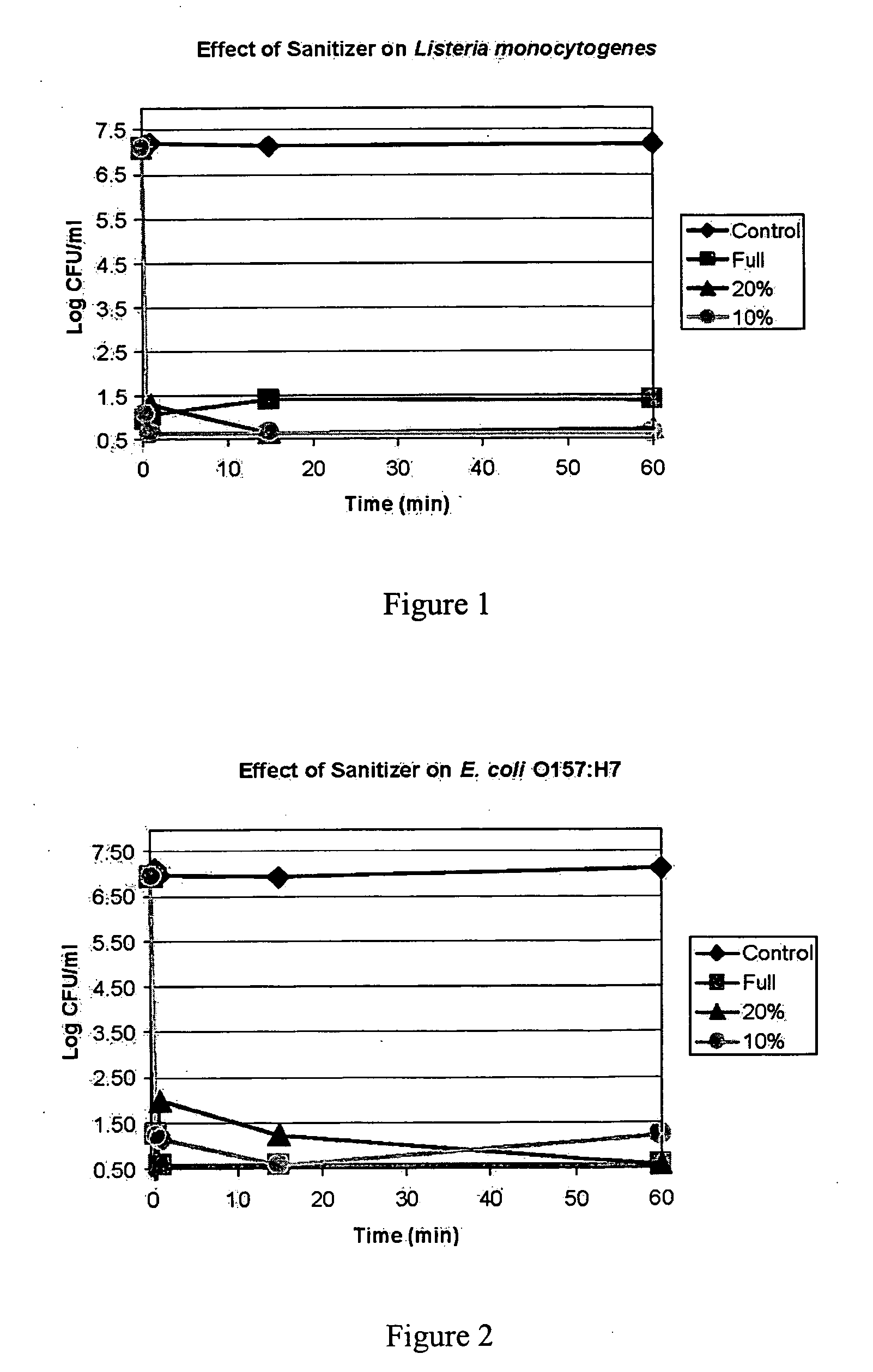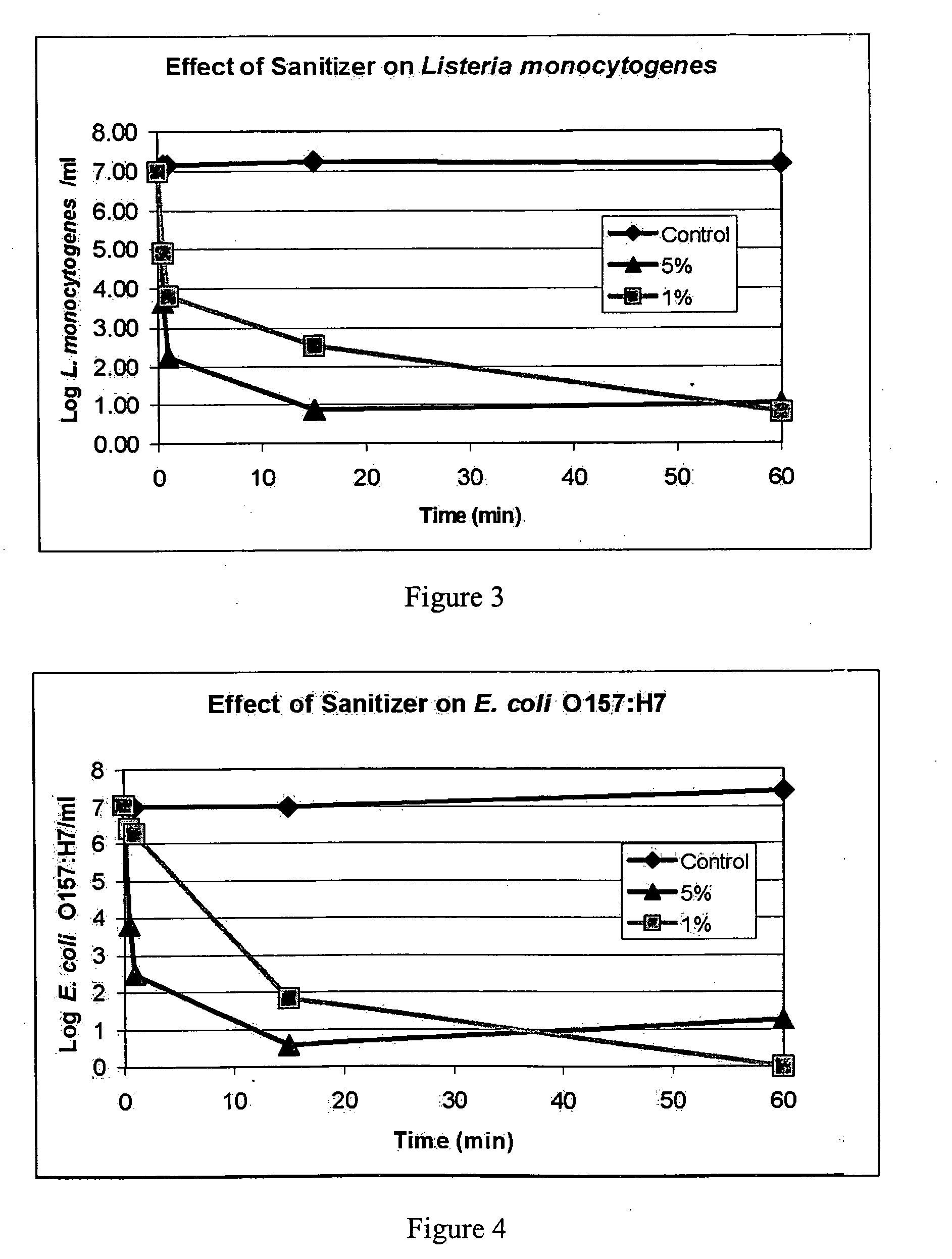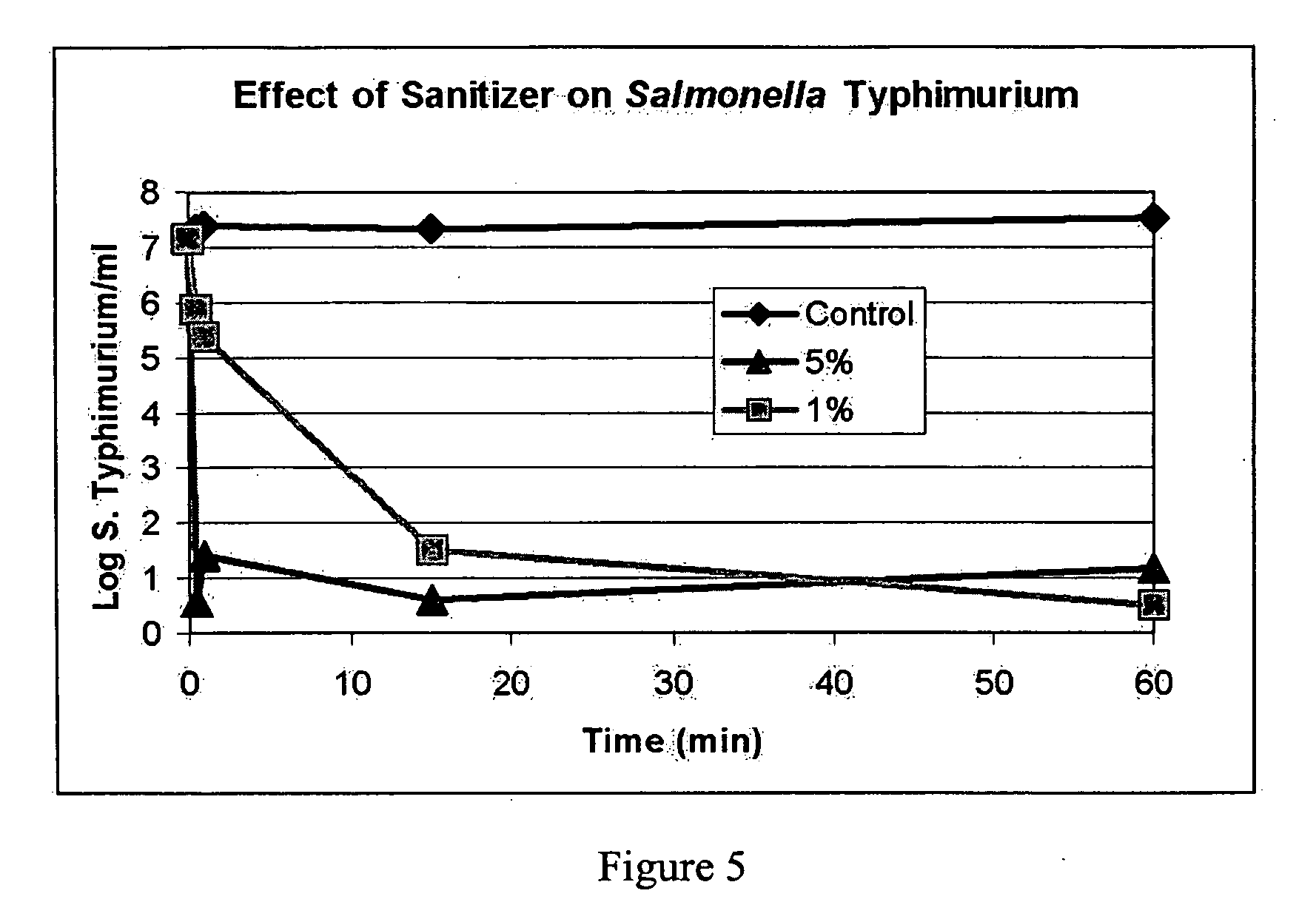Nontoxic killer of E. coli and other problem microorganisms
a microorganism and non-toxic technology, applied in the field of non-toxic killer of e. coli and other problem microorganisms, can solve the problems of food processors suffering significant financial losses, antimicrobial agents that are lethal to microorganisms, and toxic in varying degrees to humans, so as to reduce the growth of microorganisms
- Summary
- Abstract
- Description
- Claims
- Application Information
AI Technical Summary
Benefits of technology
Problems solved by technology
Method used
Image
Examples
example 1
Preparation of Stock Solution
[0056] A concentrated stock solution was prepared by adding 0.5 g benzalkonium chloride, 0.5 g paraben, and 1 ml of glacial acetic acid to 100 ml water. The mixture was stirred at room temperature until dissolved. The solution was stored at room temperature. The solution is stable for one year when properly stored, preferably in a dry, cool (<100° F.) location.
example 2
Inhibition of E. coli Growth on Agar Plates
[0057] 108 cells of Escherichia coli were spread on a plate and then were exposed to 1.0 ml of a 0.05% or 0.025% dilution of the stock solution of Example 1 for one hour at room temperature. The sanitizing solution is absorbed into the growth media. The cells were then washed in PBS and serially diluted. The diluted cells were spread onto LB agar plates and then incubated overnight at 37° C.
[0058] The plates were then examined and the number of bacterial colonies were counted. All experiments were done in duplicate. The results of this examination are shown in Table 1. No viable E. coli remained following exposure to either dilution of the non-toxic solution of the invention after an one hour exposure at room temperature.
TABLE 1Number of coloniesUndiluted101-fold102-fold103-fold104-fold105-fold106-foldControllawnlawnlawnlawnn.d.tntc186Controllawnlawnlawnlawnn.d.tntc260 0.05% solution00000n.d.n.d. 0.05% solution00000n.d.n.d.0.025% solut...
example 3
Inhibition of Salmonella enteriditis Growth on Agar Plates
[0059] 108 cells of Salmonella enteriditis in 0.1 ml of media were exposed to 1.0 ml of a 0.05% or 0.025% dilution of the stock solution of Example 1 for one hour at room temperature. The cells were then washed in PBS, by centrifugation and re-suspension in the same volume, and then serially diluted. The diluted cells were spread onto LB agar plates and then incubated overnight at 37° C. The “control cells” were diluted in media, incubated for one hour without addition of the sanitizing solution, and then washed and plated in a manner similar to that for the treated cells.
[0060] The plates were then examined and the number of bacterial colonies were counted. All experiments were done in duplicate. The results of this examination are shown in Table 2. No viable Salmonella remained following exposure to either dilution of the non-toxic solution of the invention after an one hour exposure at room temperature.
TABLE 2Number o...
PUM
| Property | Measurement | Unit |
|---|---|---|
| weight:volume ration | aaaaa | aaaaa |
| temperature | aaaaa | aaaaa |
| temperature | aaaaa | aaaaa |
Abstract
Description
Claims
Application Information
 Login to View More
Login to View More - R&D
- Intellectual Property
- Life Sciences
- Materials
- Tech Scout
- Unparalleled Data Quality
- Higher Quality Content
- 60% Fewer Hallucinations
Browse by: Latest US Patents, China's latest patents, Technical Efficacy Thesaurus, Application Domain, Technology Topic, Popular Technical Reports.
© 2025 PatSnap. All rights reserved.Legal|Privacy policy|Modern Slavery Act Transparency Statement|Sitemap|About US| Contact US: help@patsnap.com



